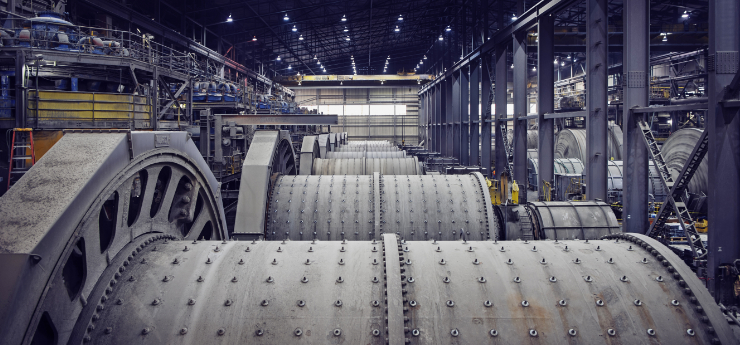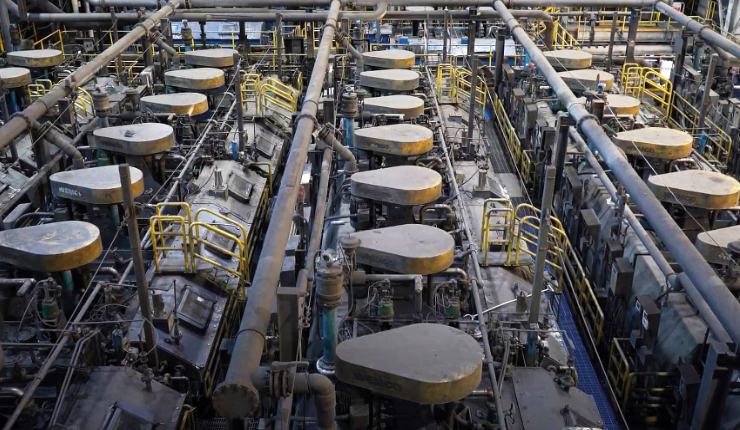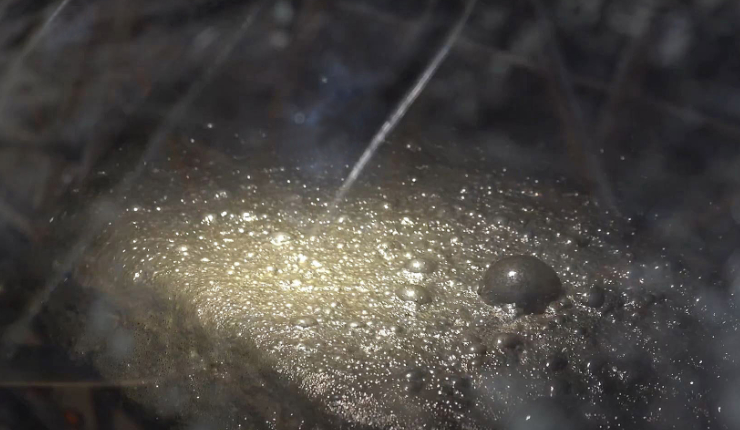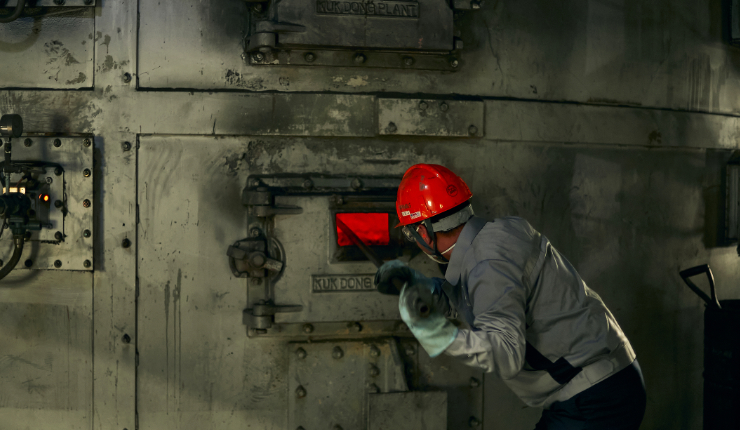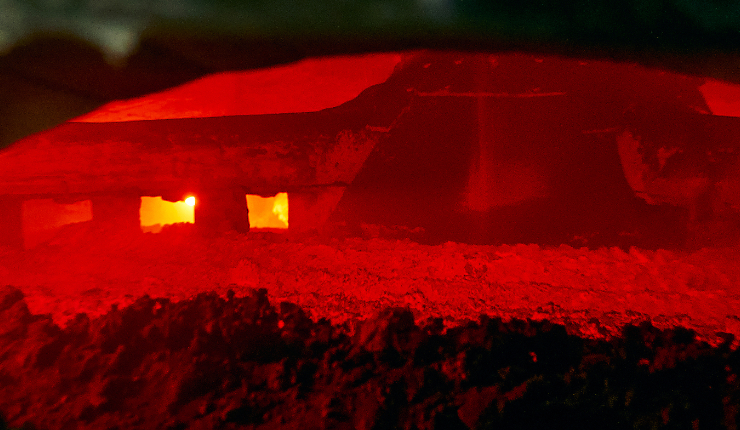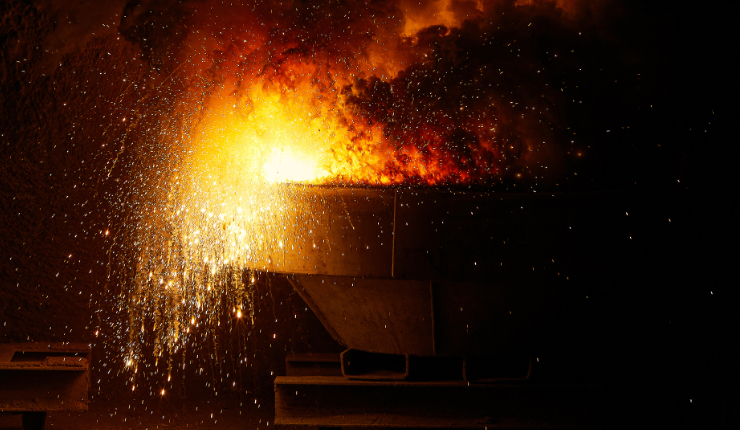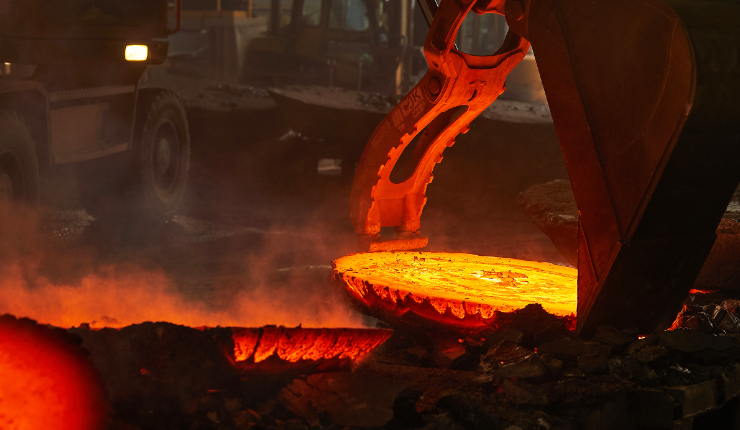Molybdenum metal production
Molybdenum metal is produced by hydrogen reduction of pure molybdic oxide or ammonium molybdate.

The chemical reduction of pure molybdenum trioxide or ammonium dimolybdate to metal requires two stages because conversion directly to metal releases heat that inhibits the process.
The first stage of reduction to MoO2 is done in temperatures ranging from 450–650°C. The second stage, where molybdenum dioxide is reduced to molybdenum metal is done in temperatures ranging from 1,000–1,100°C. Historically, both stages were carried out by pushing “boats” loaded with powder through tube furnaces containing a flowing hydrogen atmosphere.
Rotary furnaces, where powder is fed continuously through a rotating inclined tube in a flowing hydrogen atmosphere, are used at some operations, mainly in Asia, in first stage reduction operations, where they provide increased production efficiencies.


